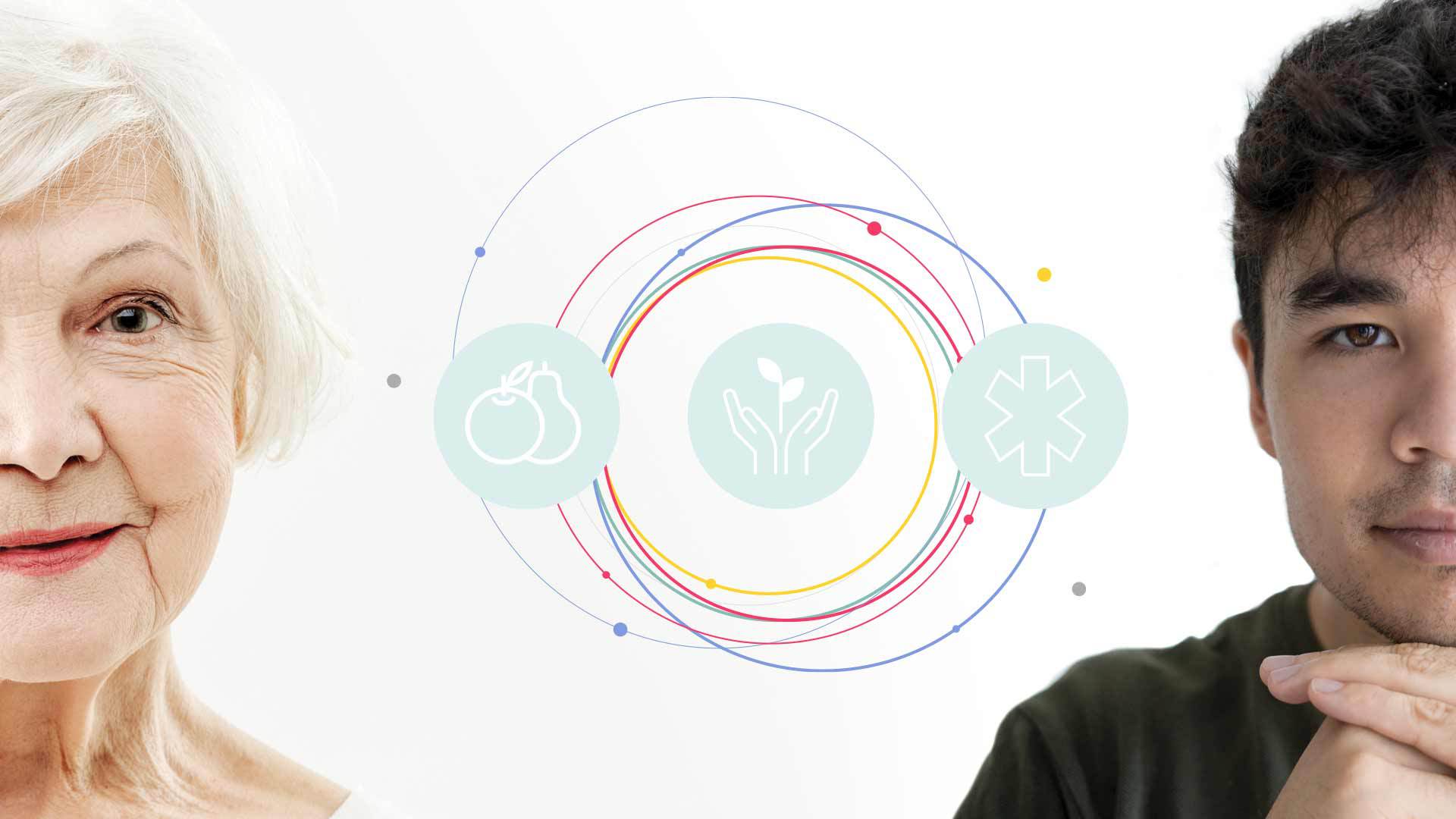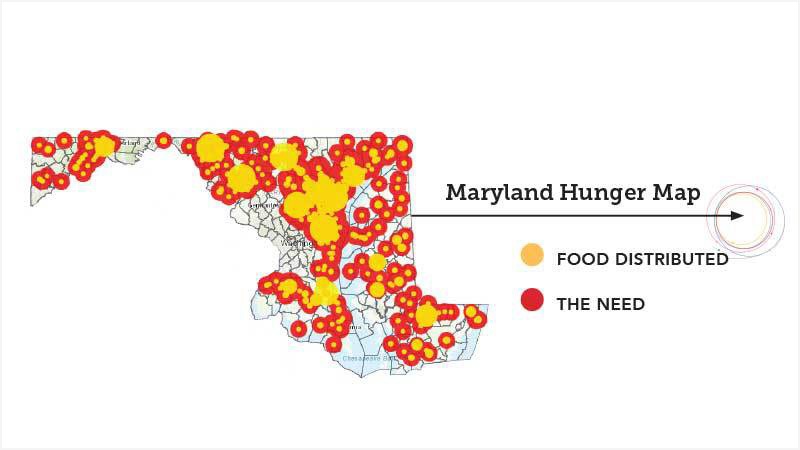Mapping Out a Brighter Future

Editor’s Note: This article was originally written in March and appeared in our Spring 2020 print newsletter. We know that due to COVID-19, the number of food-insecure Marylanders is currently, and will be for some time to come, higher than our pre-pandemic count.
We all want to live in a state with no hunger, but to get there, we really have to know hunger first. Traditionally, the Maryland Food Bank has relied on numbers from Feeding America’s annual Map the Meal Gap (MTMG) study to quantify the need and help guide our efforts. The 2019 study, for instance, indicated that roughly 650,000 Marylanders were food insecure.
But we’re on the ground every day, feeding hungry Marylanders, and we know the true need is much higher. We see hard-working individuals and families who live just above the poverty line; despite their best efforts, they can’t afford their most basic needs, including food.
But what if food was just the starting point for helping hungry Marylanders become stable, self-sufficient, and food secure?
“We knew early on that as effective as Map the Meal Gap has been for us, we needed a more comprehensive set of data to be able to do more.”
To do that, we created the Hunger Action Work (HAWK) group and charged them with developing a tool that more accurately reflects what hunger looks like in our state.
The HAWK team began the project with five clear goals:
- To develop a more comprehensive understanding of food insecurity in Maryland
- To use data to respond to the needs of individual communities with a strategic approach
- To assess how partners can play a greater role in their communities
- To evaluate and address the true needs of food-insecure individuals and communities
- And to ensure we are making the best use of the funding our donors trust us to shepherd

Why is Hunger so Prevalent in Maryland?
Maryland is one of the most expensive states to live in — food, housing, and utility costs are significantly higher than national averages. While there is better economic news for some, wages just aren’t rising at the same level as the cost of living, forcing too many Marylanders into difficult choices.
So How We do More Accurately Assess Food Insecurity?
In working with the United Way on a FoodWorks project, we realized that their holistic approach to identifying Marylanders who needed help could be a valuable addition to our efforts. Rather than just looking at money coming into a household, the yearly United Way’s ALICE (Asset-Limited, Income Constrained, Employed) Report looks at what it takes to maintain a Survival Household Budget — the actual costs of basic necessities (housing, child care, food, transportation, health care, technology, and taxes) in Maryland, adjusted for different counties and household types.
The HAWK Team combined MTMG and ALICE information with other localized data, and created the Maryland Hunger Map, the most detailed and accurate view of hunger we’ve ever had.
Take a Deeper Dive into Hunger Statistics
See what the need looks like in your neighborhood.
Take a Deeper Dive into Hunger Statistics
See what the need looks like in your neighborhood.
So Now That We Have A Clearer Picture Of Hunger, How Can We Use It To Make A Greater Impact?
The true genius of the Maryland Hunger Map is that at the same time it describes the problem, it also has the ability to help prescribe solutions.
For example, when we overlay our partner locations, we can quickly identify areas of unmet need. Our Regional Program Directors are pairing hunger map data, including areas of unmet need, with survey results from our recent assessment of the root causes of hunger, to customize solutions based on the true localized need.
On the Eastern Shore, we teamed up with longtime supporter Perdue Farms to create the Mobile Market, a 26-foot “on-the-go” supermarket that will not only supply fresh produce and other nutritious food to local residents, but it will provide access to wraparound services that help address some of the root causes of hunger.
“I’ve been fighting hunger on the Eastern Shore for a decade and have never had access to tools with as much potential to affect change as the Maryland Hunger Map and the Mobile Market.”
At the time of publication, we’ve already seen a dramatic increase in the need due to COVID-19, but the long-term social effects of this crisis are going to keep it higher for months, and likely years to come, said Jessica Corcelius, director of partner services.
The hunger landscape is changing rapidly in our state but having tools like the Maryland Hunger Map will allow us to be flexible, deliberate, and remain highly impactful in Maryland communities.
We Need Your Help
Programs, campaigns, and educational outreach at the Maryland Food Bank has always relied on the philanthropic support of charitable individuals like you.
Much like our food distribution efforts, outreach activities at the Maryland Food Bank rely on generous donations of money and time.
We hope you’ll consider a contribution.






